‘Sometimes, miracles do happen.’ So said Carolyn Christov-Bakargiev, director of Castello di Rivoli, Turin, at a press conference in July to unveil what is, by any institution’s standards, a transformative partnership for the museum. From January 2019, Castello di Rivoli will display the prodigious collection of the secretive Italian collector, Francesco Federico Cerruti (1922–2015), in a long-term loan arrangement with the Fondazione Francesco Federico Cerruti. This will also entail the opening of collector’s private villa to members of the public for the first time.
At a time when leading historical and encyclopaedic museums are eagerly devising contemporary programmes and collections, this is an intriguing counter-development. Castello di Rivoli was the first contemporary art museum in Italy when it opened in 1984; it now becomes the first in the world to acquire a historical collection, with all the opportunities that will create for re-evaluating the museum’s existing activities through the lens of European art history. And this is no ordinary collection: over the course of around 45 years, Cerruti amassed some 300 sculptures and paintings, from exquisite gold-ground panels to important futurist and surrealist works, as well as hundreds of rare books and furnishings. As work began to restructure the great royal castle outside Turin, designed by Filippo Juvarra, as a museum in the late 1960s, so Cerruti started to construct the modest villa – just along the hilltop of Rivoli, and practically in the shadow of the castle’s famous Manica Lunga – that would come to house one of the greatest private collections assembled in post-war Italy.
As visitors began to make the pilgrimage to Castello di Rivoli from the mid 1980s, however, Cerruti’s collection remained hidden – if almost in plain sight. The collector hosted few guests at the villa; most of those who were invited, among them trusted art historians and dealers, attended one of two small gatherings that the collector held every year to celebrate his birthday (1 January) and name day (San Federico; 18 July). More frequently, art dealers visited him at his apartment in Via Bellardi, Turin, near one of the five bookbinding factories through which he had made his fortune. Cerruti himself only visited the villa on Sundays (it is thought that he only ever spent one night there), eating lunch and then passing the afternoon in reading about art and studying the collection. It was a miniature palace of art.
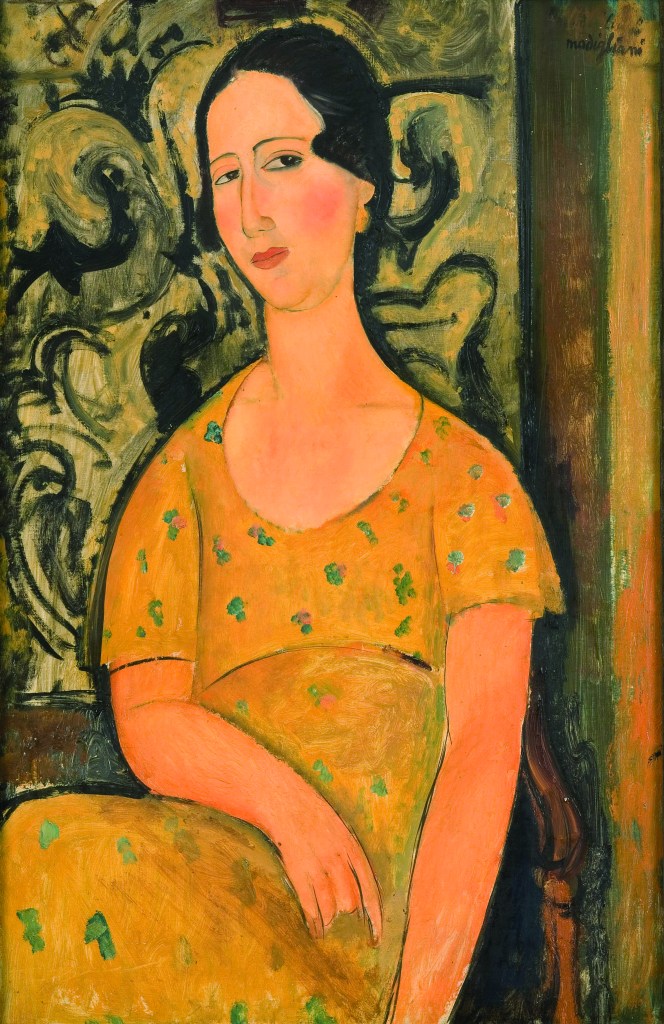
Woman in a Yellow Dress (La Belle Espagnole) (1918), Amadeo Modigliani
Although the story is enigmatic, to a degree it chimes with the character of Turin. This is a city with a strong tradition of industrialist collectors, among them Giovanni Agnelli and Riccardo Gualino, and one that is still home to many reticent collectors of fine art who watch over their treasures in quiet refinement. What is unique, however, is the revelation of the scale of Cerruti’s collection, combined with a growing knowledge of his reclusive habits. When Cerruti loaned works to institutional exhibitions it was always under the condition of anonymity, and only after his death did the Fondazione F.C. per l’Arte emerge from its chrysalis to become the Fondazione Francesco Federico Cerruti per l’Arte. Cerruti’s identity need no longer stay veiled when his great Modigliani portrait, Woman in a Yellow Dress (La Belle Espagnole) (1918), comes to Tate Modern for the museum’s survey of the artist this autumn (23 November–2 April 2018).
For Christov-Bakargiev, the secretive nature of the villa and collection, and of Cerruti’s idiosyncratic relationship to them, is also redolent the mystical timbre of Turin – a city that is home to the Sacra Sindone (Turin Shroud) and to the evocative collections of the Egyptian Museum. ‘The collection made a house,’ she tells me, ‘even if a symbolic or ideal house – maybe a house for eternity.’ If the hermetic associations are suggestive, the notion of a house for eternity is entirely apt: Cerruti was a collector who eschewed museum-building during his lifetime, instead arranging for the collection to be made public when it, and his lifetime were complete: ‘He was a great collector, but rather the opposite to the great collectors of our time,’ she says. ‘Cerruti was much more similar to a collector of the early 20th century.’ The statutes of the foundation are clear about Cerruti’s posthumous wishes. They stipulate that the collection be kept together after his death, and preserved in the villa in a manner that is secure and faithful to his installation of the works – and crucially, that reasonable provision be made for public access.
Francesco Federico Cerruti was born in Genoa, the son of a bookbinder who moved his family to Turin while Cerruti was a young child, soon setting up a small bookbinding business. His was a simple, austere childhood – he and his siblings were tasked with binding books at the kitchen table – and something of that asceticism seems to have carried through to his later professional persona in Turin. Even after his death, those who knew Cerruti continue to refer to him as the ‘ragionere’ (accountant), his nickname for many decades. Following the war, he relaunched the family business as the Legatoria Industriale Torinese, but it was not until the late 1950s, when he introduced the industrial technique of ‘perfect binding’ to Italy, that the company began to expand rapidly. It would go on to produce books for Italy’s leading publishers – including many sumptuous art books for the likes of Rizzoli and Mondadori – as well as telephone directories for the entire country.
The urge to collect came to Cerruti, it seems, around a decade after that breakthrough in business. The first artwork to enter his collection was a small untitled work on paper by Wassily Kandinsky, which was once owned by the painter Ludwig Baehr; it was probably bought by Cerruti between its presentation in New York in 1969 and its appearance at an exhibition on the Blaue Reiter at the Galleria dell’Arte Moderna (GAM) in Turin in early 1971 (where it was recorded as a loan from a private collection). The collecting bug took hold. As Annalisa Ferrari, Cerruti’s assistant for 30 years, recalls, by the time she began working for him in 1983 he had already acquired many more works, including important gold-ground paintings by Bernardo Daddi and Neri di Bicci.
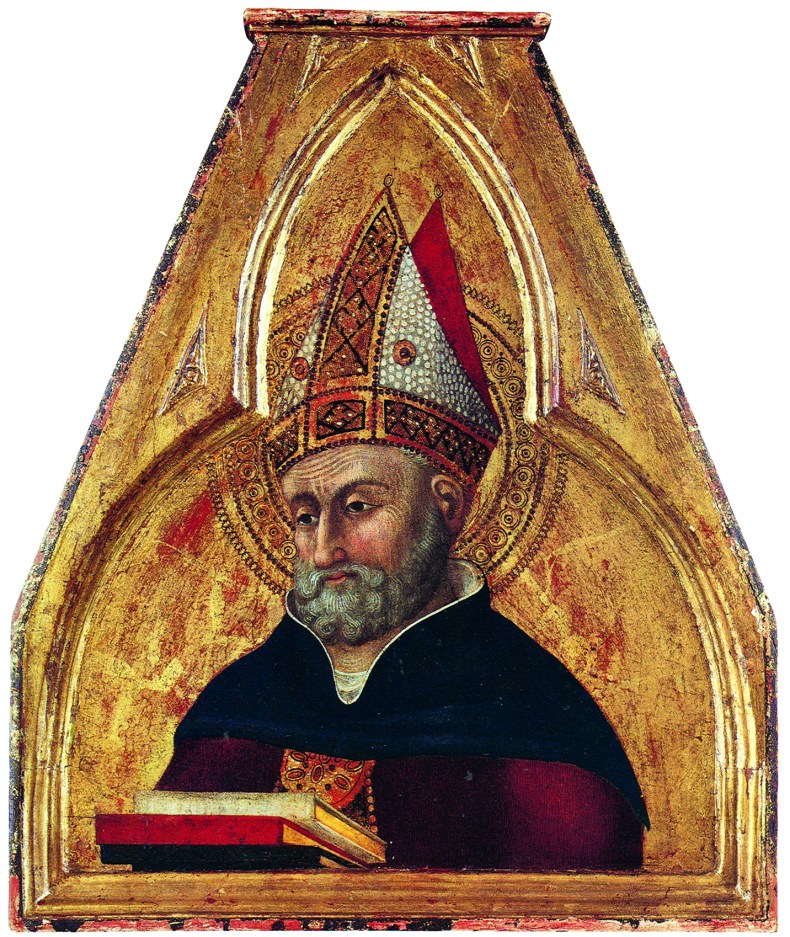
Saint Augustine (1444), Stefano di Giovanni di Consolo, known as Sassetta
What had started to develop was a collection that would be dominated by European art, much of it on an intimate, almost devotional scale. Cerruti’s medieval, Renaissance and baroque paintings are largely Italian, and inevitably many of them depict religious subjects. The modern paintings are more varied, although just as consistent in their exceptional quality: they include works by Picasso, Magritte, Klee, Ernst, Bacon and many others, alongside Futurist works by the likes of Balla and Boccioni and a group of five paintings from the final years of De Chirico’s metaphysical period. With the most notable pieces of furniture, there is a strong sense of things being returned to their place: Cerruti’s acquisitions in this field included a late 18th-century ivory-inlaid bureau-cabinet by the great Torinese ébéniste, Pietro Piffetti, formerly in the collection of Lord Ashburton, and two sofas designed by Filippo Juvarra, the architect of Castello di Rivoli.
There is still considerable research to carry out on the evolution of the collection, since Cerruti kept only piecemeal records of his acquisitions. There is much to be discovered over the coming 15 months about the pace and direction of its growth, for instance, and about the provenance of individual artworks. At this stage what emerge are tantalising glimpses, drawn from the memories of people who knew Cerruti and from the ephemeral material he left at the villa. It is clear, from the recollections of Annalisa Ferrari, that Cerruti rarely travelled far to view museum collections or potential additions to his own collection; she remembers being dispatched to art fairs and then describing the works on offer down the phone to him. He followed auctions closely, presumably bidding by phone, and underlined any lot on which he had bid successfully with three emphatic lines in the sale catalogue. He would often display catalogues or books that illustrated works in the collection on chairs placed below them – ‘the house as one big pop-up book’, is how Christov-Bakargiev sees it.
What seems certain, however, is that Cerruti was frequently inspired to make acquisitions by exhibitions he saw in the museums and galleries of Turin. He purchased a work by Franz Kline, for instance, after the survey show at Castello di Rivoli in 2004 (a happy correspondence for its current director, who curated that exhibition in an earlier role as head curator at the museum); and his final acquisition, a radiant Renoir portrait of a young girl carrying roses, followed a major loan exhibition of works by the artist from the Musée d’Orsay and the Musée de l’Orangerie in Paris to the GAM in 2013–14. ‘There was a constant interaction between what he was seeing at exhibitions and what he was purchasing,’ says Christov-Bakargiev.
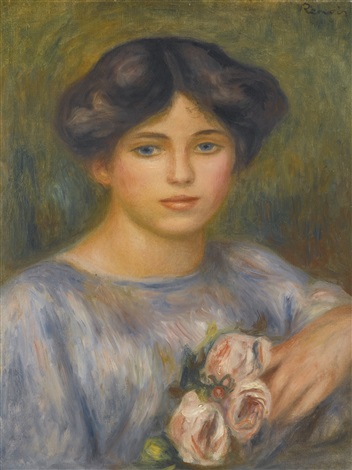
Jeune fille aux roses (1897), Pierre-Auguste Renoir
Nor was Cerruti the type of collector who sets out to meet artists, although he was friends with Giulio Paolini, whose father worked for the bookbinding business. Where Cerruti travelled the greatest distance was in his books, taking imaginative journeys via their pages from the seclusion of his hilltop villa. Responsible for the binding of so many Italian art books, he was profoundly stimulated by their contents and by their place in the tradition of book production. The latter is evinced by his important gathering of rare books and bindings – perhaps most symbolically through the 12-volume edition of Joan Blaeu’s Atlas Maior, that grand projet of 17th-century publishing, which speaks so eloquently in this context of the collector’s desire to amass and preserve a world of knowledge in the solitude of his private kingdom. ‘He found perfection in art, which would and could not disappoint him,’ says Annalisa Ferrari.
For Christov-Bakargiev, Cerruti’s personal and professional involvement in art books provides the grounds for a fascinating interpretation of the collection. This was a collector responsible for the industrialisation of book production but consumed by the desire to acquire unique works of art, the former funding and intellectually nurturing the latter. It’s a situation that feels, argues Christov-Bakargiev, like a refutation of Walter Benjamin’s theory of the loss of the aura of the work of art in the age of mechanical reproduction: ‘Here is a person who’s at the forefront of the mechanical reproduction of art,’ she says, ‘in the lowest category of book production traditionally – the binding of it – but actually a category that has the most do with perfection. […] There was this whole process of the physicality of mechanical process, [and because of that physicality] Cerruti understood that the aura of the artwork could in fact be intensified in the era of mechanical reproduction.’
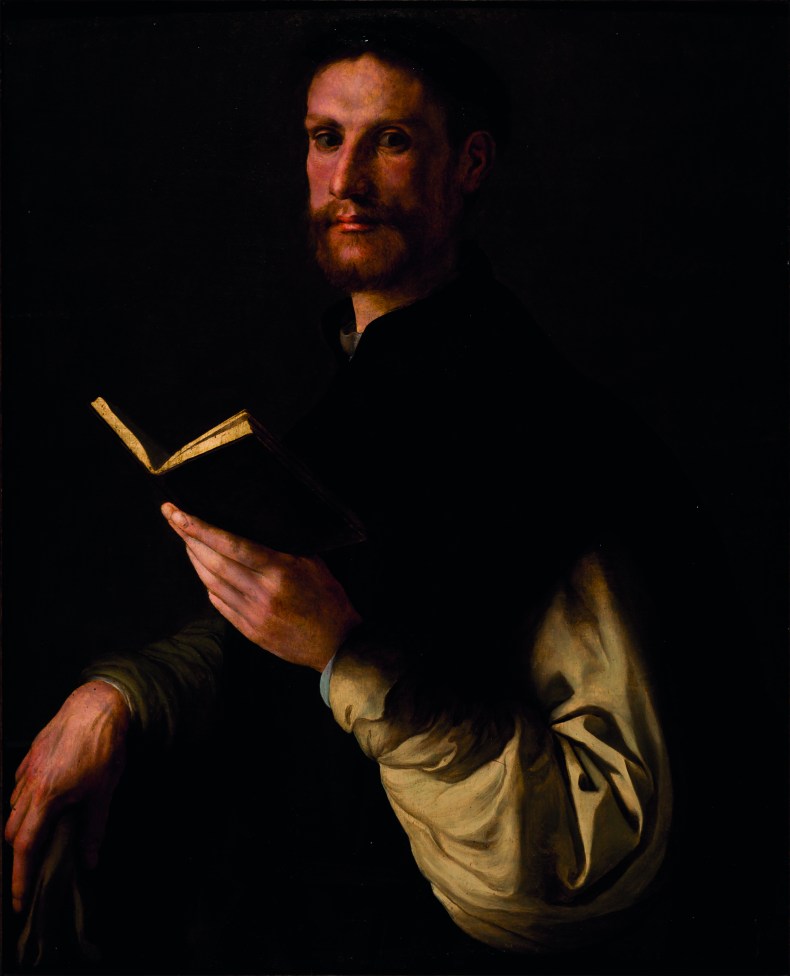
Portrait of a Gentleman with Book (1534–35), Jacopo Carucci, known as Pontormo
At a more figurative level, the collection repeatedly reveals the pull that books exerted on Cerruti, and his fascination with the hands that have historically made or held them. In a Sassetta panel depicting Saint Augustine, a pinnacle from the Borgo Sansepolcro altarpiece (1444), the viewer’s eyes are drawn to the prominent stack of three volumes that this father of the church, too, is contemplating. Or take Pontormo’s Portrait of a Gentleman with Book (1534–35) – a work rediscovered by the dealer Carlo Orsi in 2000 – in which the delicacy and mystery of the open book, with its pages turned from the picture plane, contrasts the elongated, almost grotesque hands of the sitter. Or there is De Chirico’s Metaphysical Self-Portrait (1919), in which the artist clasps a book by its spine and points to its pages with his free hand, as if suggesting he is himself a closed volume but one with the privilege to reveal hidden knowledge. In such images of solitary males accompanied by books, Cerruti in a sense populated his villa with versions of himself.
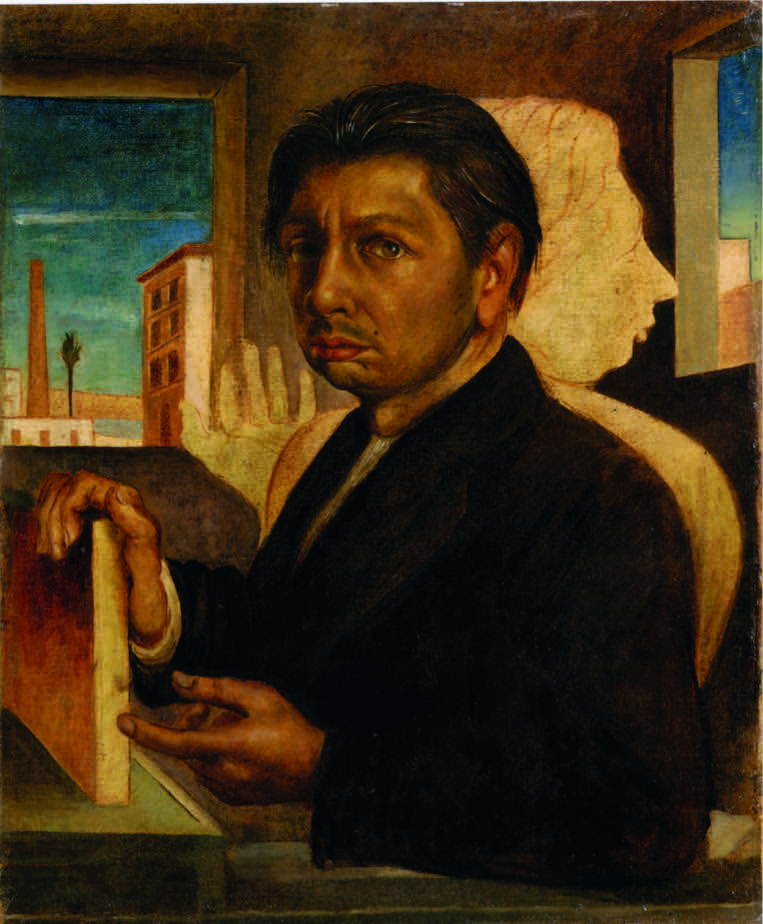
Metaphysical Self-Portrait (1919), Giorgio de Chirico
Thematic patterns develop in any collection, of course; and they are not always the result of conscious decisions on the part of a collector. But Cerruti was notably attentive to how his collection was displayed at the villa, with an eye for juxtapositions that did not always follow the chronological or stylistic logics of art history. In the music room, for instance, the Pontormo portrait hung near a Man Ray photograph of Harry Melville, ‘itself a kind of portrait of a suffering figure’, according to Christov-Bakargiev, and another work in which the attention is held by its subject’s prominent, almost surreal hands. ‘Cerruti’s juxtapositions are very contemporary,’ she says. The rooms at the villa, though decorated in a grand neo-baroque style, are smaller than they appear in photographs. While the main bedroom was dedicated to the gold grounds and the mirrored dining room was lined with De Chiricos, other rooms were compact imaginative playgrounds in which such principles of juxtaposition took hold. Annalisa Ferrari remembers the fastidiousness with which Cerruti altered the hang when his eye made new connections – as it frequently did. In his acquisitions and their display, Cerruti was a perfectionist.
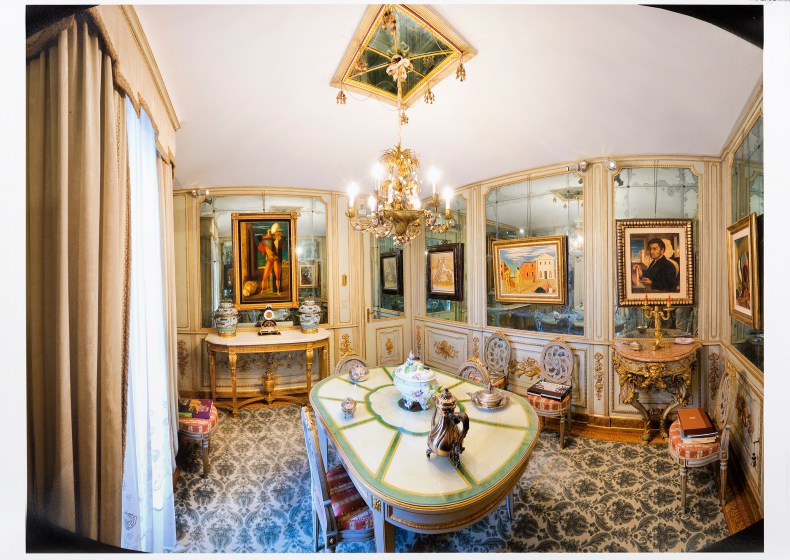
Painting by De Chirico hang in the mirrored dining room of the Cerruti villa. Photo: Gabriele Gaidano
Before the villa opens to the public, the artworks have been temporarily placed in storage while a renovation project is underway to install modern security and climate-control systems, and to provide discreet facilities for visitors. Christov-Bakargiev is adamant that the villa will not become a typical house museum, with Cerruti’s collection and effects preserved in aspic, but that it will be a lively extension to Castello di Rivoli. She has already suggested to Hans Ulrich Obrist that he might curate an exhibition for the villa, and would like artists to select individual works from the Cerruti collection that could feature alongside their own pieces in displays at Castello di Rivoli. ‘The challenge will be how to reveal, from a very contemporary perspective, the holistic nature of the collection, and to reveal all the intellectual connections between works,’ she says. But at the heart of the projects to come will be the enigma that was Francesco Federico Cerruti: ‘It’s very important to tell the story of the character and who he was,’ she insists. ‘I hope someone will make a movie.’
From the September issue of Apollo. Preview and subscribe here.
Unlimited access from just $16 every 3 months
Subscribe to get unlimited and exclusive access to the top art stories, interviews and exhibition reviews.

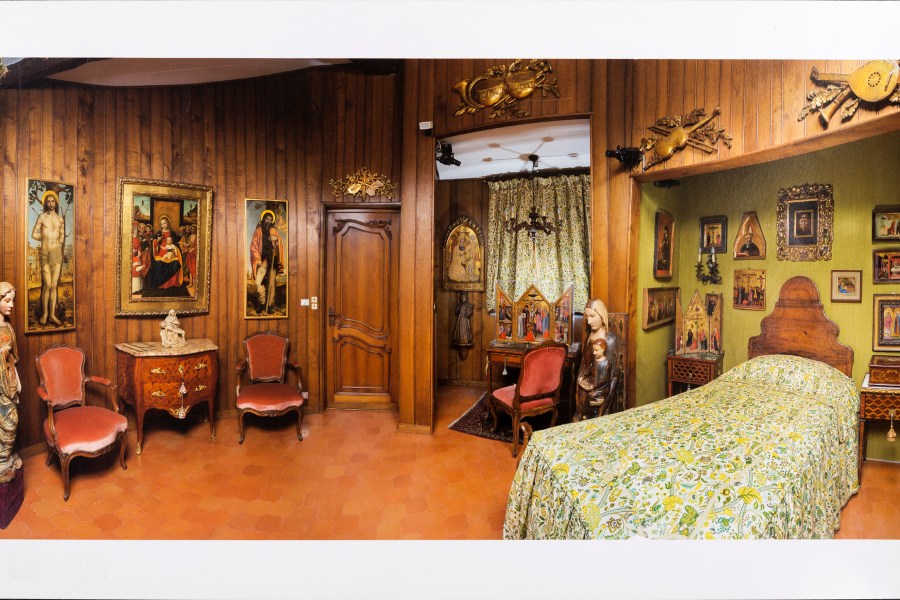
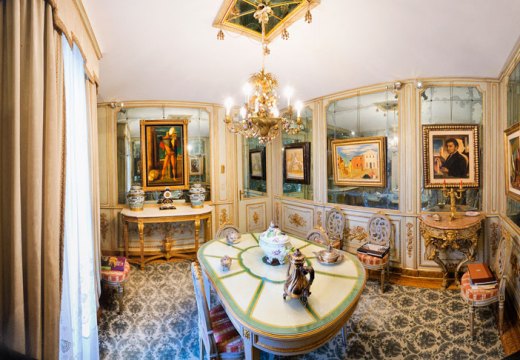

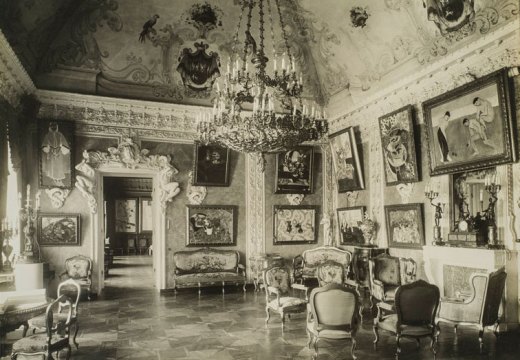









![Masterpiece [Re]discovery 2022. Photo: Ben Fisher Photography, courtesy of Masterpiece London](http://www.apollo-magazine.com/wp-content/uploads/2022/07/MPL2022_4263.jpg)
It’s time for the government of London to return to its rightful home